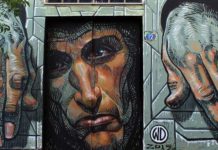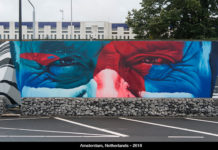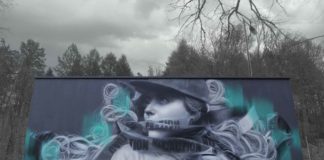The first time I visited the Wynwood district in Miami was in 2011 and actually by chance. I was looking for the artwork “The living room” (by the architects Roberto Behar and Rosario Marquardt of R&R Studios) in the design district when I suddenly found myself in the nearby Wynwood neighborhood.
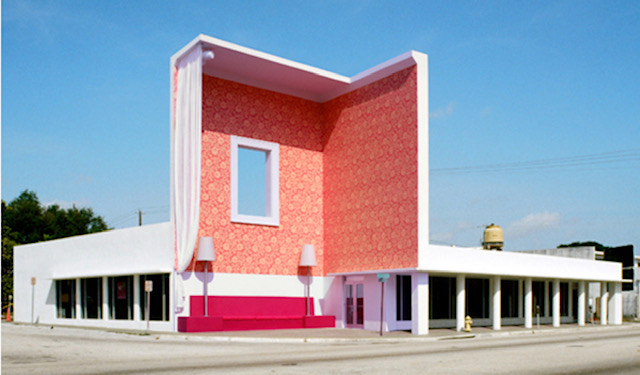
Amazed as I drove past its gigantic murals and recognized the work of big names in the Street Art community such as Shepard Fairey and Kenny Scharf, I also found a lot to admire from artists I didn’t know yet. Only when I was back in the Netherlands I found out that the paintings were part of Wynwood Walls – a gentrification project initiated two years earlier (in 2009) by project developer Tony Goldman. Goldman, (1943 – 2012), saw it as a challenge to turn this rundown, dull area of huge warehouses and windowless depositories so well-suited for Street Art, into a center where people would go to and enjoy themselves, in the first place by looking at large murals.

Picture by @ccartlover

How to get there?
Between 2011 and December 2014 I was lucky enough to visit the neighborhood several times. My first visit (2011) was during the Summer, a time of tropical rain showers which I could only avoid by hiding in the car. My three subsequent visits all took place in sunny Miami Decembers, perfect to tour by bike.

A beautifully scenic route leads you from Miami Beach across Biscayne Bay to Miami proper: this Venetian Causeway is a road across multiple isles, linked by a chain of bridges. From Downtown Miami, it is but a short bike ride to Wynwood, across the railroad tracks, past some homeless shelters and a good number of bums and junkies hurling comments at you (I don’t know if it will be the same for men) to end up in Street Art Valhalla.
Once in Wynwood you could peddle quietly past the warehouses covered in beautiful artwork, stop occasionally, take pictures, and relax at one the (very) few coffee houses. And so it was…
Enjoy the ride!
December 2019. I’m looking forward to visiting this open-air Street Art museum again. I have rented my bike. A bottle of water and a banana stowed in my bag. I am ready. The moment I drive up the Venetian Causeway it starts to drizzle softly so I skip the photo ops of the bay. Along the road, flanked on both sides by the bay’s water, a bright green cycle path is demarcated on either side. In retrospect, this is a first sign that something has changed. The last time I drove here, in December 2014, there was no bright green cycle path and little to no bicycle traffic. Now, I notice small groups of tourists in front of me, also cycling to the other side.
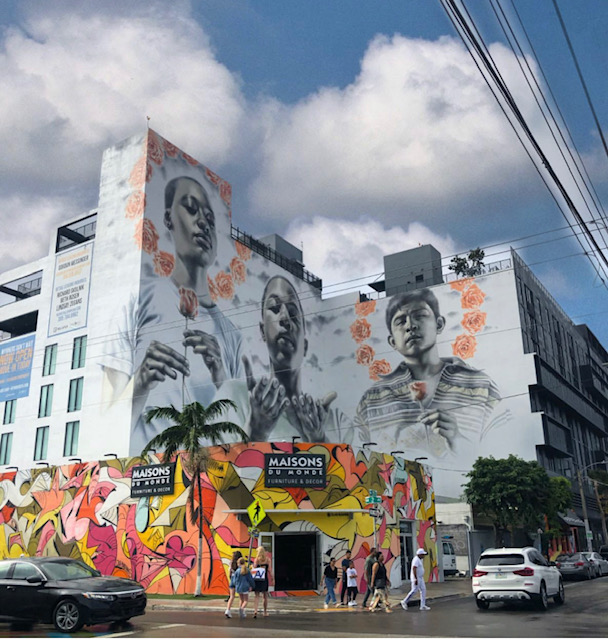
Picture by @ccartlover
Once I arrived in Wynwood I had a hard time orientating myself. Gone was the somewhat desolate urban landscape of two-story warehouses along near-empty streets. Through the masses of people and newly constructed highrises, I had a hard time finding the old familiar landmarks of the neighborhood. Where was the thrift shop I used to pass, and what of the only bar with terrace in the neighborhood where I used to grab a coffee?
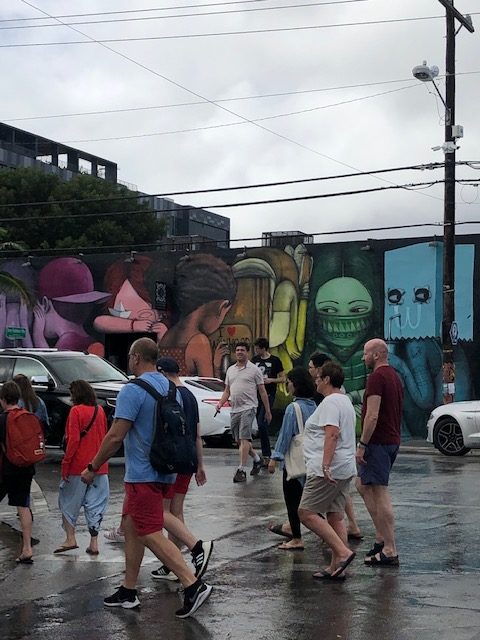
Picture by ccartlover
Pleasure Island
Wynwood had exploded! The neighborhood has been flooded with crowds of people wandering the streets and countless eateries and breweries have been added in the last five years. I try to focus and through the masses I finally see the original Wynwood open-air museum where groups of people are now obscuring the many works of art. Taking a picture of the works without people will be difficult, I think.
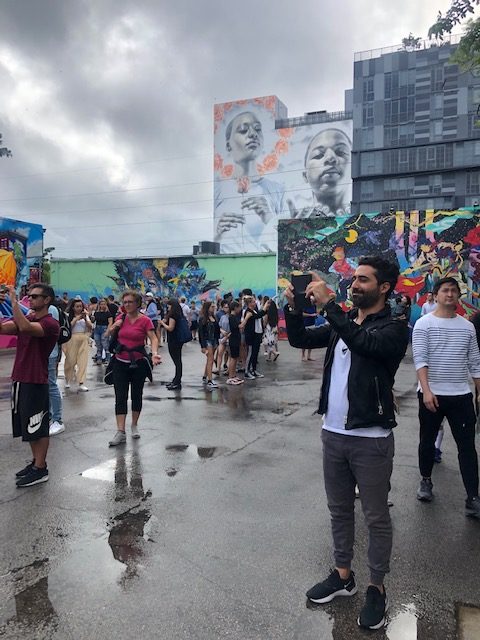
Parents put their children in front of a Ron English, mothers take extensive time to make a series of portraits of their daughters in front of Tristan Eaton’s Wynwood contribution, where the next tourist poses extensively for an unabashed selfie session.
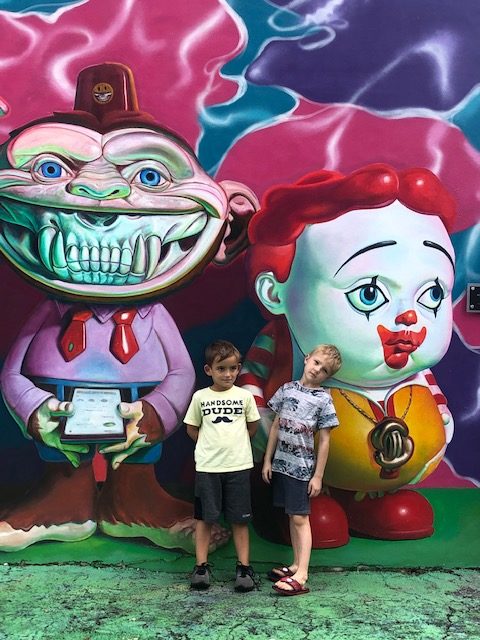
Picture by ccartlover.

Picture by @ccartlover
Endless souvenir shops attempt to cash in on Wynwood’s success with their Street art-oriented souvenirs. And to make matters worse, there is a coming and going of golf carts, offering guided tours that drive you past all the highlights of the neighborhood. I had to swallow, I had landed in Wynwood amusement park.
I had been looking forward to a quiet day of photographing art from artists that I admire, but the serene environment of Wynwood as I had known and loved it was no longer there. Time to adapt and flip the script…, I thought. For this, if any, is the place that brought Street Art to the next level, and to the wide popularity I was now witnessing.
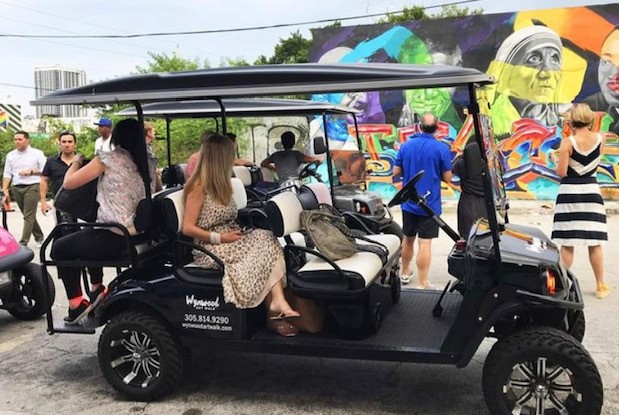
I held on to the idea that the makers of the art have not changed fundamentally, still make their gorgeous murals, and keep evolving. There were many new Wynwood Walls to be admired, and thanks to the occasional tropical shower chasing sightseers off to drinks and lunch, I was able to take some solitary photos after all.

Picture by @ccartlover
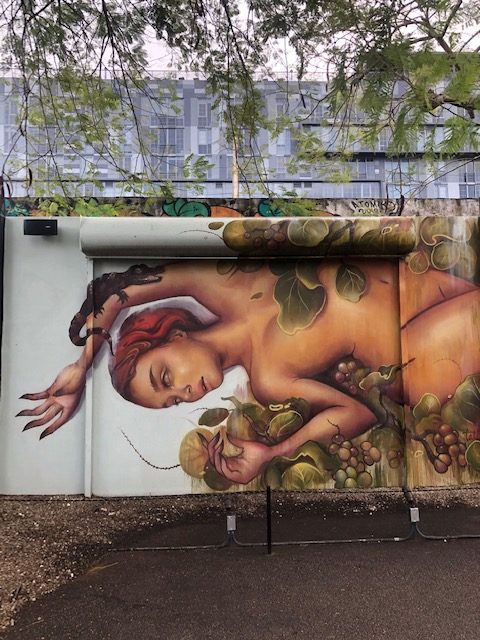
Picture by @ccartlover
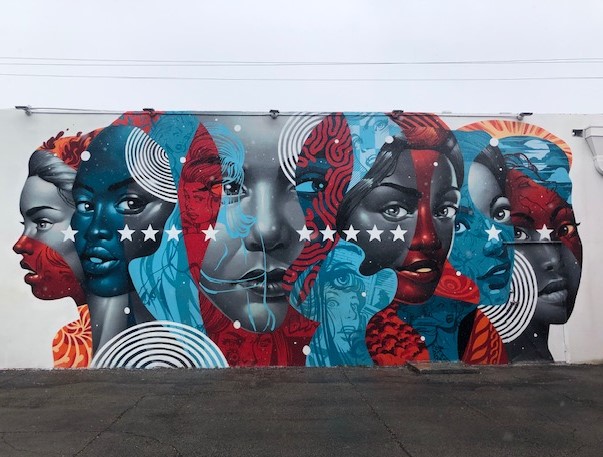
Picture by @ccartlover

Picture by @ccartlover
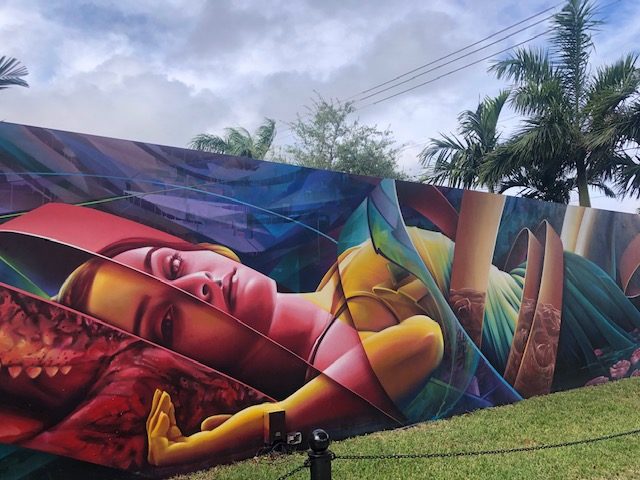
Picture by @claudia
Still, this experience wasn’t the Street Art fix I had been hoping for. So I push ahead. Street Artists tend to step off the beaten track and I like to follow them. At first I look for art on the outer edges of Wynwood, where I photograph less polished work between the tramps and (still) the occasional golf cart. Then I cycle on. Over the years my “gut feeling” has always brought me to the right places and relying on that feeling once again, I find myself driving into a virtual no man’s land, across which I see the work of Shepard Fairey, Kevin Ledo, and Findac light up in the distance. The sun has started to shine again and electrifies them, and me — ‘I need to go there’, is all I can think. The absolute silence of the neighborhood stands in stark contrast with the chaos I have just left behind me, and with my short length and the drug-addicted homeless people fresh in my mind, it is a little bit scary. I’m on my guard. This is Downtown Miami, not South Beach for god’s sake — but the other side of the vast, wide street lures me with its glaring murals.
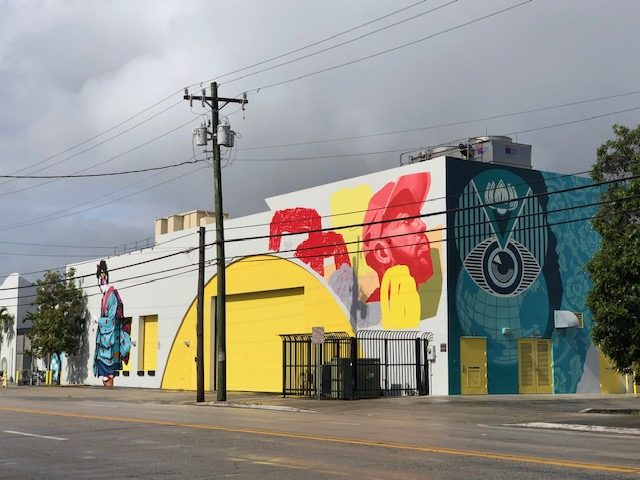
Picture by @ccartlover
Educating Art
I find that the works of Fairey, Ledo and Findac are painted on the wall of a school. And they are not alone! On the enormous complex of the Eneida M. Hartner Elementary school and the Jose De Diego high school there are countless murals that decorate the newly whitewashed concrete walls of the school. What a monument! Being an art teacher at a high school in the Netherlands, I try to imagine how this project was initiated.

Picture by @ccartlover
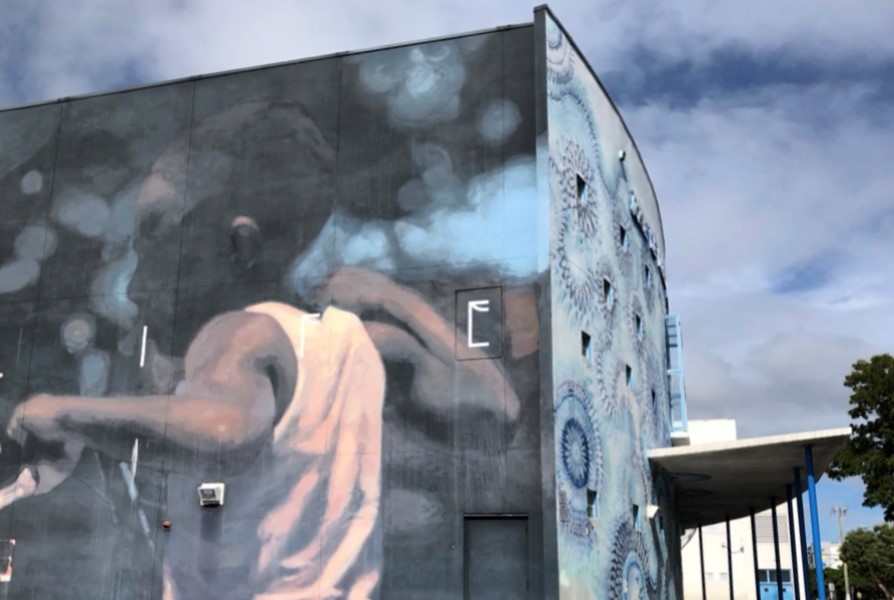
The schoolboard must love the Arts, I remember thinking, but I find out later I couldn’t be farther off, as the following quote from the Huffington Post shows:
“It starts with this irony: Wynwood’s high school has no Art Department… because of budget constraints… How can the fastest-growing art district on earth have public schools that don’t teach art or music?”
This sounds disturbing, but not entirely unfamiliar. In my role as an art teacher, I know what it feels like to have budgets cut time and again, and to always have to explain the importance of the Arts to the schoolboard — as opposed to apparently self-explaining Science or Economics, for example. But hey, at least we still have art education.
Re-imagining the Arts Worldwide: The RAW project
The realization of the beautiful murals has been created with the help of The RAW project. In 2014, RAW co-founded a coalition of non-profits, organizations, artists, and the school’s administration to bring color and inspiration to Wynwood’s Jose De Diego middle school’s concrete walls, and to a school suffering a drought in budget for creativity.

Picture by @ccartlover
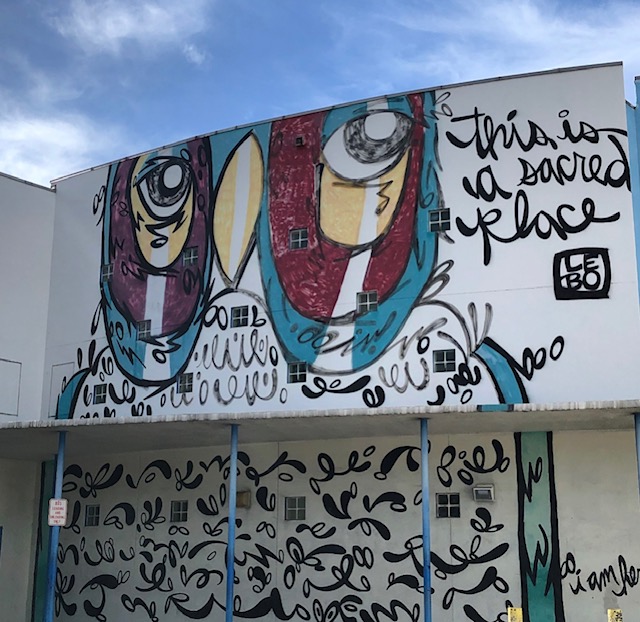
Picture by @ccartlover
Over 80 artists came together, and results were magnificent enough to increase school enrolment among the community. More kids were coming back to school, and class attendance increased. There was an increase in test scores, school pride, and a decrease in bullying and violence. RAW sent a shockwave of enthusiasm that proves it can better the school and its body through art.
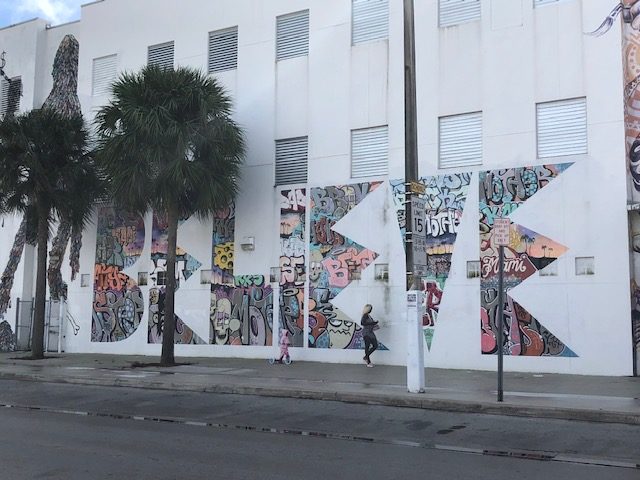
Picture by @ccartlover
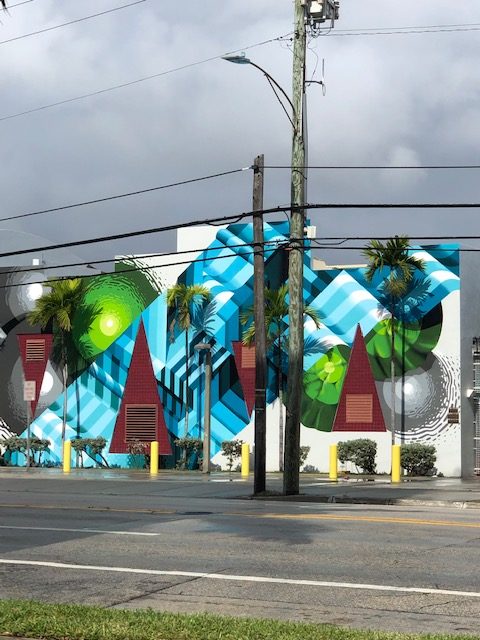
Picture by @ccartlover
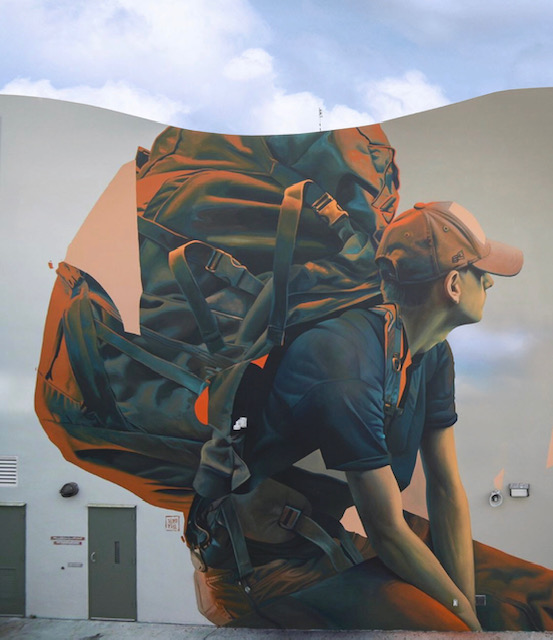
Wynwood’s Eneida M. Hartner elementary school is made up of a melting pot of minorities living below the poverty line, finding refuge from broken home life within the walls of education and a loyal, dedicated faculty. During Art Basel 2016, this elementary opened its doors for a carefully selected group of artists to beautify its walls and encourage art education throughout the community. RAWs project has sparked a conversation and a process that bridges urban contemporary art and education through the very medium that has celebrated.
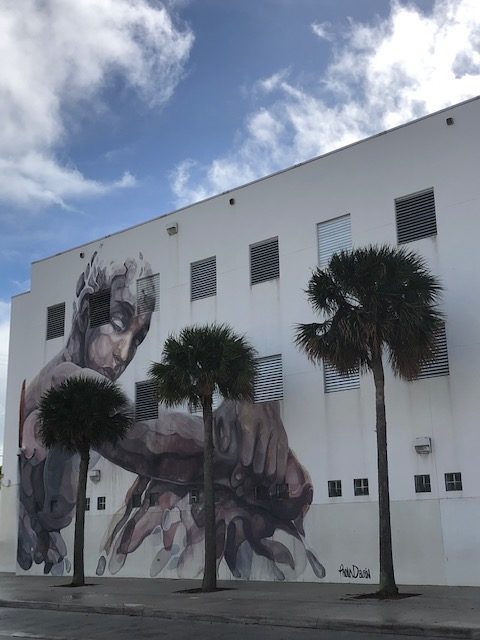
Picture by @ccartlover

Picture by @ccartlover

Picture by @ccartlover
How beautiful to see that this art form (Street Art), which in my opinion is surpassing any other form of contemporary art, can convince students to come to school and make them feel so safe that it manages to improve their learning performance. Full proof for the message with which I have been pounding everyone who wants to hear it for years:
Teens need art!
Art can not only serve to beautify a neighborhood, school or interior; it can also be utilized as an educational and therapeutic tool. Looking at art, or even making it, is proven to increase the capacity for empathy… a skill that has at its core the ability to understand persons and things from a different perspective. Empathizing with another situation or person forces you to adjust your biased judgment or assumption. In addition, looking at art increases the imagination. The imagination, the imagined, plays a major role when it comes to thinking about the future. How important skill for a teenager! What do you dream of? What would be nice to achieve? In an underprivileged neighborhood, there is often little room for such thoughts, since children are preoccupied with practical matters such as financial worries, quarrels, and survival in general. In the case of the Jose De Diego middle school, the pupils (from a melting pot of a neighborhood made up of minorities living below the poverty line, for whom school is often a refuge from broken homes) are given the space to think and feel and be seen for who they are and might be. As a teacher, I see this as the main task of an educational institution: offer opportunities and make the students believe that they matter. Amen to that!
From community project to amusement park, and from amusement park back to community project, Wynwood Walls too keeps evolving, expanding and redeeming itself with great success.


